Incremental Narrative Design In Becoming Saint
Exploring the interwoven relationship between narrative design and game mechanics in the development of the roguelike strategy game Becoming Saint.
What role can narrative design play in a roguelike game? We see in the following how in Open Lab, thanks also to narrative design, we have progressively added narrative sections, layers and depth to Becoming Saint, a strategic and management game set in 14th-century Italy that we are developing, where death comes easily, and where you play and replay a fixed game loop. Narrative and mechanics in this game are intertwined in many ways, and creating these connections also raises the user interface design problem of making the player understand what is essential in this complexity. So, narrative design, mechanics and user interface design are all shown as connected.
I hope that what follows can help dispel the idea that deep work on narrative content and structure is needed only for games of the “narrative” genre and also show how to layer the work on narrative design and depth progressively.
About Becoming Saint
The idea behind Becoming Saint is to merge an open-ended narrative representation of 14th century Italy’s political and societal situation with a little strategic, tactical, funny game of non-bloody confrontations.
We want to convey strong messages with a light tone, merging that with “battle” mechanics that are somehow effortless and hard at the same time. The game is tragicomic in nature, as is shown immediately by its settings, assets, and opening scenes, and the narrative should mirror this in every detail.
The core loop
Narrative design first enters Becoming Saint in the form of choices. You decide every aspect of your creed, how to manage, earn, and distribute food, which believers turn into followers, which towns, and which power to challenge.... The world is partially generative, but randomness hardly plays any role in the game; how your leadership and movement will end depends on your choices and your skills in managing “battles”, which we call confrontations.
The game loop is about making choices concerning what is your political and religious program, getting or losing followers, marching toward a town to convert, and finding a way to feed all your followers.
A core original idea was also about the absurdist and somehow non-violent representation of fights: in Becoming Saint, nobody dies, but groups (“units”) get converted through forms of moral, religious, political and sometimes also some physical pressure.
Indeed, in Becoming Saint, the sole death is the player's own — seized by the Inquisition, tried, and executed — which is instrumental in becoming a saint, of course.
A first build
The first prototype of Becoming Saint came together very quickly, and replayed now after two years of development, it is quite remarkable how little has changed in the core loop. The following screenshots on the left are from a running build that was created a couple of months after the concept; notice how all the elements of the core loop are there (in a very rough form).
After a year of development, we got a build that was already graphically pleasant and a fully playable game; see the screen of the first build on the left and those of the current one in comparison in the following gallery.
Opening screen:
Pick a new name:
Define your creed:
Turn believers into followers:
After marching and begging, try to convert a town:
Iterating the mechanics
What changed mostly during our different iterations on the game has been keeping a fine line between strategy and auto battler, how much control to give the players during “battles”, or how many opportunities to give in managing the balance between food and charisma. But most of these changes also modified the kind and variety of stories the player would be building during gameplay.
Iterating narrative design
In the very first prototype, the narrative had a single entry point, defining the regulae, which determined the parameters for selecting followers and political orientation, and the rest of the game was the mechanical loop. The design process added connections, feedback, and layers to this starting point, resulting in a complex web of relations between narrative and mechanics. Let's examine some examples in the following.
Example: The end of conversion feedback
At the end of each conversion attempt, we gave a list of six different “hints” for how to be more effective in converting towns.
Now given the limited spectrum of possible actions, these hints tended to repeat themselves, and the suggestions got a bit lost in the amount of information provided.
So we changed that, giving it specialization and progression: the hints are now given one at a time, as comments on the gameplay and as suggestions for improvements. The collection of suggestions already given is preserved in order to avoid repetitions. This also enables a better, clearer user interface, with space around the information and larger fonts and images.
Example: Unravelling the “Player Profile”
Below is the Player Profile section when we completed its first redesign: after the player has made their socio-political choices for the current chapter, the state of the player changes and is shown here:
There is a lot of information here, as it is normal for a panel dedicated to describing the overall state. But in testing, we found that the core information the players were focusing on, i.e. how the narrative choices had direct consequences in the overall policy and in enabling or disabling follower kinds, were hard to see and decipher.
So, we made several changes:
Progressive hints of choices content: when a choice is adopted, its effect gets revealed to the player, and they have it available for future plays.
Explicit scores on personality traits.
A dedicated, focused feedback panel on consequences on enabled and disabled units.
A history log of changes in political orientation.
A third overall redesign giving more space and explanations
Below are the screenshots of these changes; these clarifications enable the player the possibility of creating a coherent story of the consequences of the chosen political line, making sure that they don’t get the feeling “my choices have no consequences”, which is one of the most frequent complaint about the role of narrative in non narrative games.
Hints about choices:
Scores on personalities:
Explicit feedback on consequences for follower types:
Changes in political orientation:
All these were available directly from the player profile as pop-ups.
Adding these additional feedback panels brought some clarity to the players, but this generated further problems because we got a cluttered set of layers with a main, still very complex base with two popup screens. So this led to a third revision, where the information is presented in a flow of separate panels that can be explored at will or just skipped:
Example: Managing food projections
One of the core mechanics in Becoming Saint is the management of food: once you accept a group of admirers (“believers”) in your following, hence turning them into “followers”, you are responsible for feeding them. Now computing what food you may need and may get and consume is not only complex, but also not exactly predictable.
This is all the information we gave at the start:
There were just two numbers, giving a “projection” on the future. We evolved this to a combination of a compact feedback panel, a complete analysis panel, and in the end, we even added a short information tutorial for first-time players:
Example: Managing food for picnics
In the game, you march continuously through Italy with your followers. And so they get hungry all the time. Again, here we initially gave some options to manage that, but they were unclear and not enough:
We made the option spectrum broader and clearer with respect to consequences:
Example: A posteriori character design and introduction
Once the game loop was fixed and the game stabilized, we had some players that started playing for quite a while, and many requested more variety in situations, in particular for the march between adopting new rules and battles (“confrontations”). So, as an intermezzo for the march towards the next town to convert, we introduced new characters, people that were not believers, but make contact with your movement (cult?) in order to offer services that you can accept or refuse. Example characters are “Ciompi”, the Florentine revolutionary, the roguish donkey trader, and the simoniac bishop:
All the deals that these characters propose use “currencies” from the existing gameplay: charisma, food, sacred items, and new types of followers, so they were easy to design and program.
In this case, narrative and mechanics are part of a single process generating a stand-alone episode, with the spectrum of agency defined by the narrative within a context defined by mechanics.
This is a good example of how a narrative designer can intervene in an existing game loop and mechanics, bringing variety to successive levels at a low development cost.
A non-standard usage of the narrative content manager
As I hope it's clear from above, developing a decent video game requires a lot of revisions and testing. So an essential structural feature of the production process is to keep it as flexible as possible, with independent production flows, so that narrative, animations and all the different assets can evolve and change while the core keeps evolving in the game engine, hence enabling parallel developments.
In particular, for the narrative content and its logic, it was very helpful to have those in a separate container with respect to the game engine (Unity in this case). The narrative content and its logic are created and evolved in Homer, a free web-based narrative design tool available here.
Here is an example of how the content of a chapter of Becoming Saint is defined:
Each choice changes the values of some variables. The bridge between Homer and the game engine is a single file (JSON), and the chapter format is fixed, so all the chapters may change, but this will not interrupt or disrupt the game's evolution in the game engine. Homer’s “dialogues” are here used to define a sort of state machine.
Becoming Saint comprises 43 chapters, plus five that are conditional in the sense that they will be presented if certain conditions apply; for example, when the Pope dies, a new one is needed (not that we currently wish so):
Again, here we see how “narrative” events lead to the definition of new mechanics, in this case, how much you decide to invest in making your candidate become Popesse.
In the first prototypes, the stories were served linearly, but then we designed a little algorithm that divides the stories into different sets according to themes and provides them in a randomized way, alternating themes in a consistent way so that each gameplay may result in having a different sequence of chapters. So again, this shows how you can add design and more refined behaviour in layers, doing tests and hence changes throughout the process.
Conclusion and thanks
We've explored the many ways narrative design and mechanics can intertwine. I think the examples show that deep narrative work isn't exclusive to "narrative" genres and can be effectively integrated incrementally.
This post is the root of a chapter in my forthcoming exercise book, A Narrative Design Playbook.
Thanks to my colleagues in Open Lab: Pino Panzarella, who designed all the wonderful Becoming Saint screens, Matteo Bicocchi for developing Homer, and the whole Firesquid team for feedback and help on Becoming Saint. Also, thanks to Verena Kyratzes, Marco Spelgatti, Daniele Giardini and Petar Mavroviev for support in infinite ways. And thanks to all the many friends who support me in my narrative design journey through media.
P.S. Practice narrative design with me!
So this summer I will be teaching a *hands on narrative design course* through the excellent D6 platform, thanks to Konstantinos Dimopoulos & co. for setting it up!
Enroll here:
English: https://www.d6learning.com/course/narrative-design
Italian: https://www.d6learning.com/course/design-narrativo-per-i-videogiochi


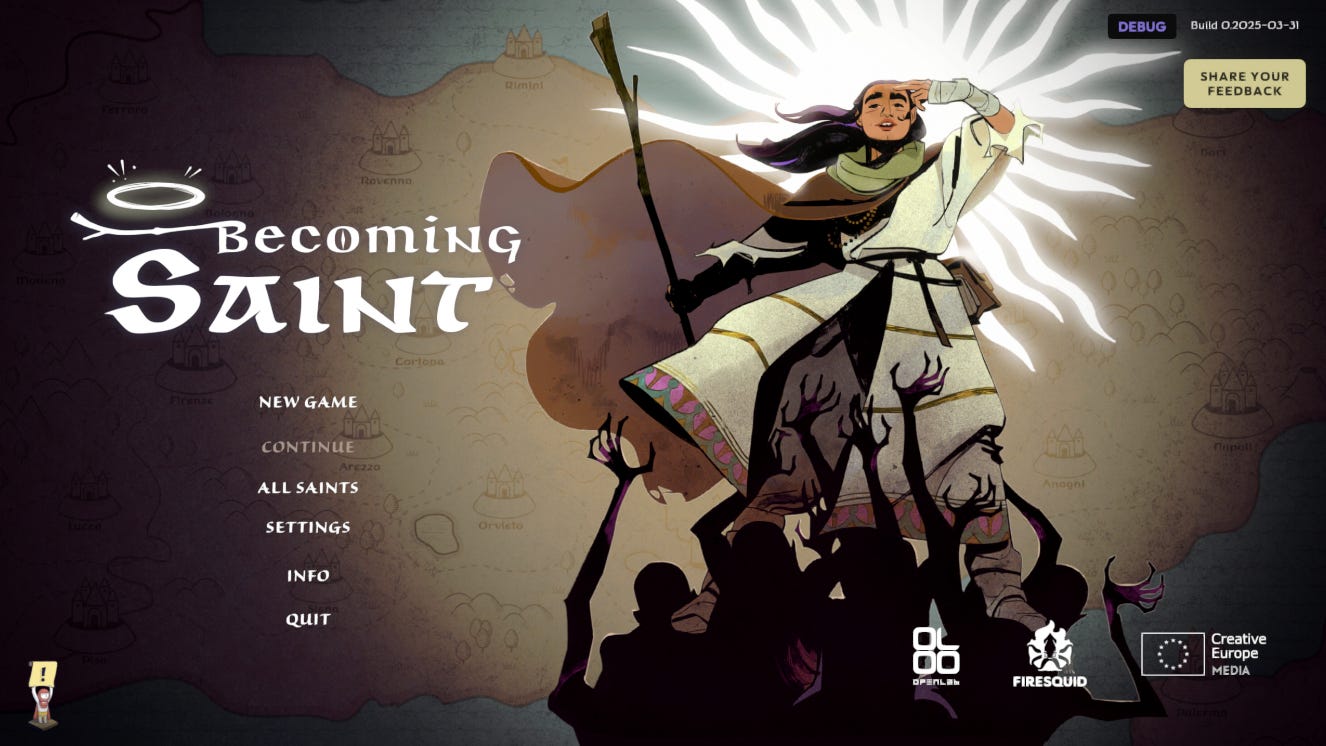
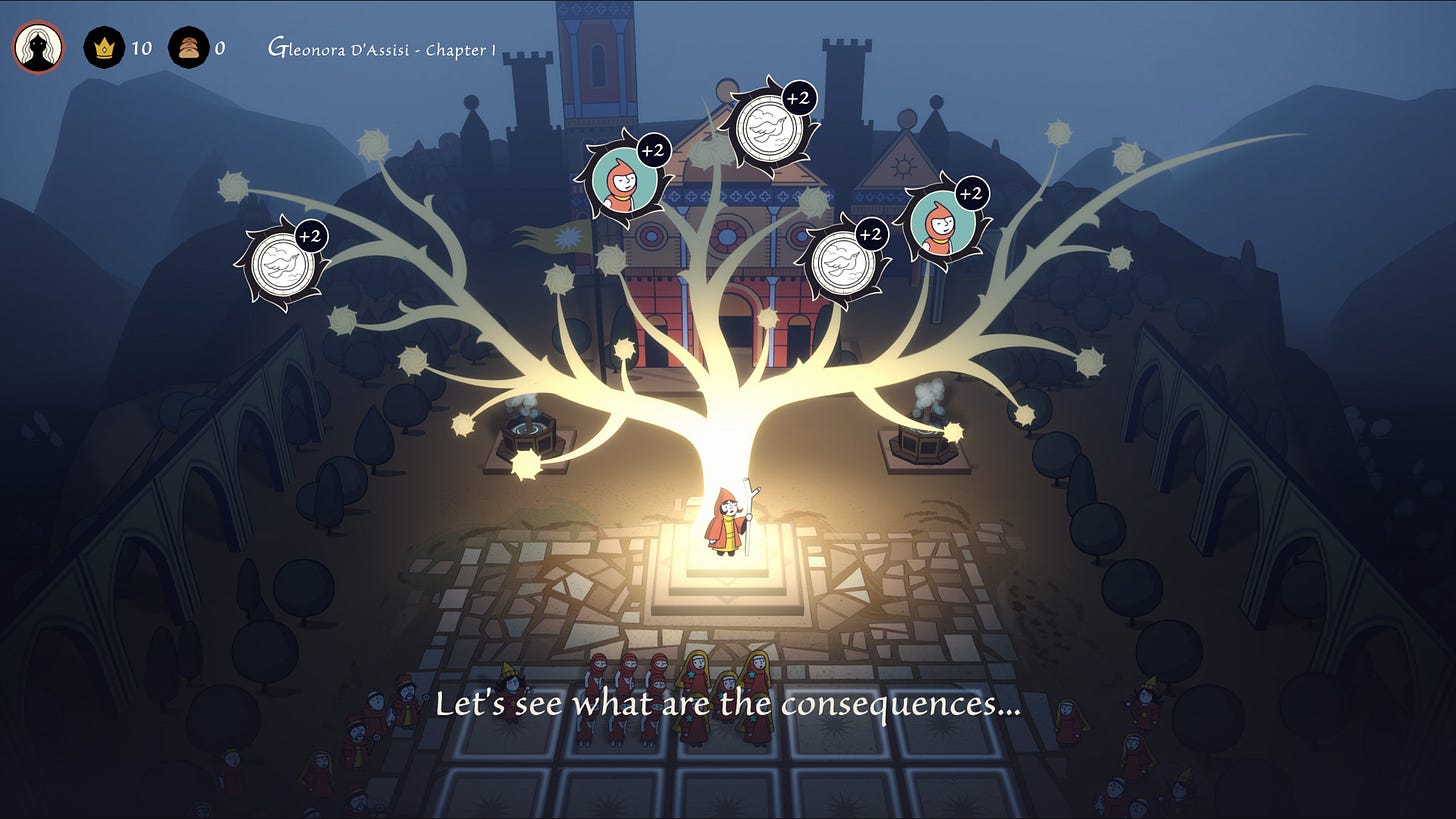

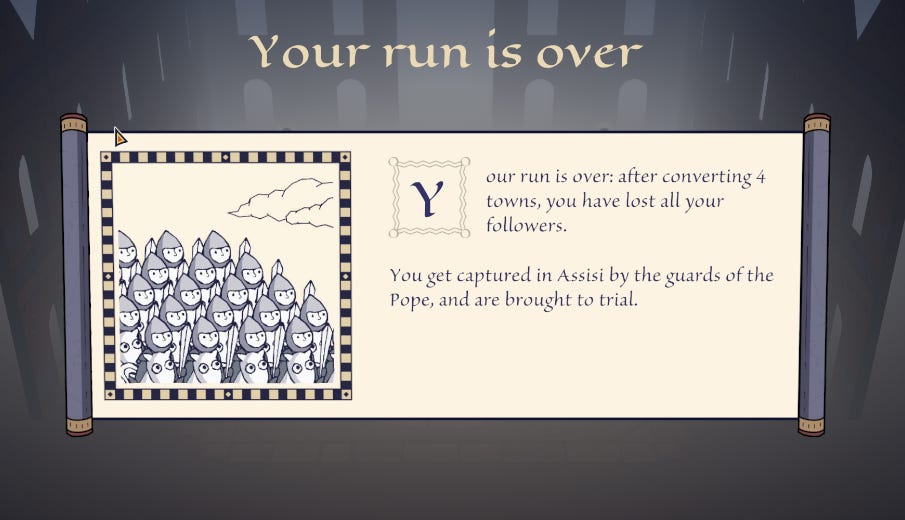
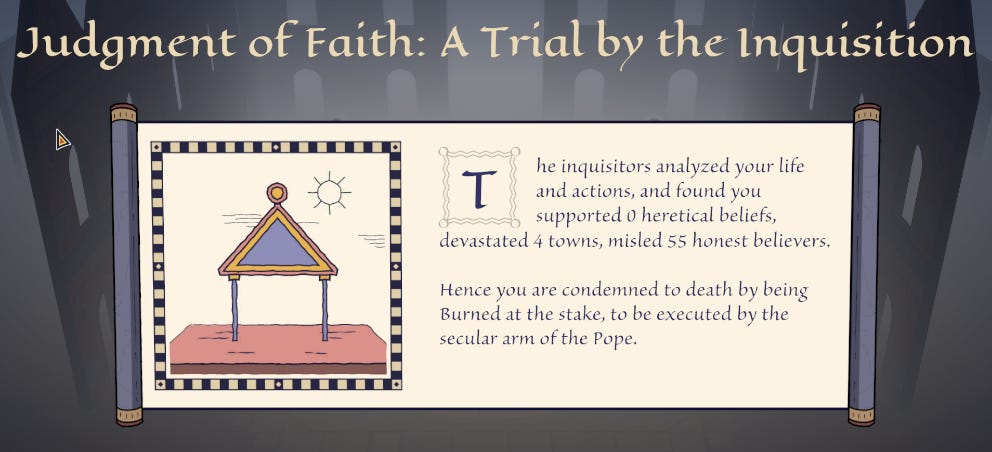
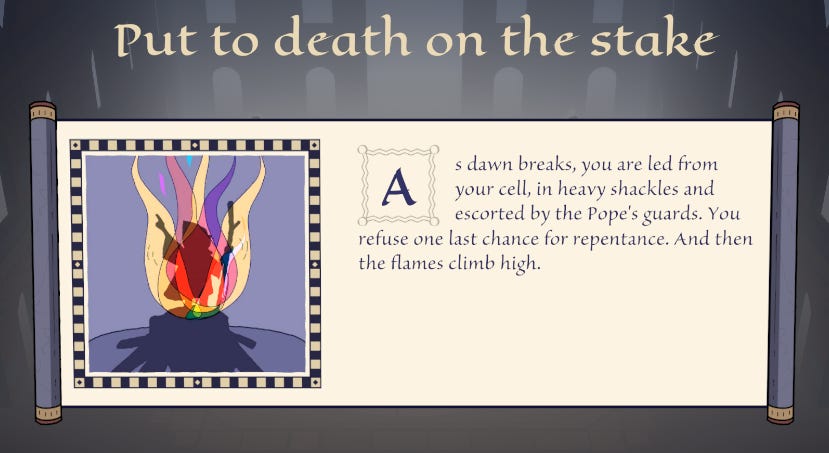






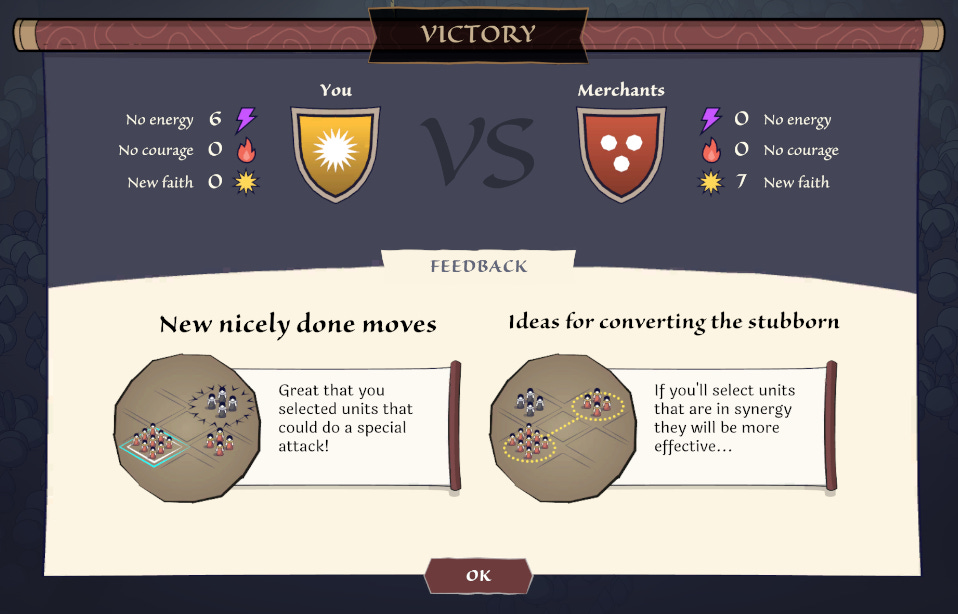
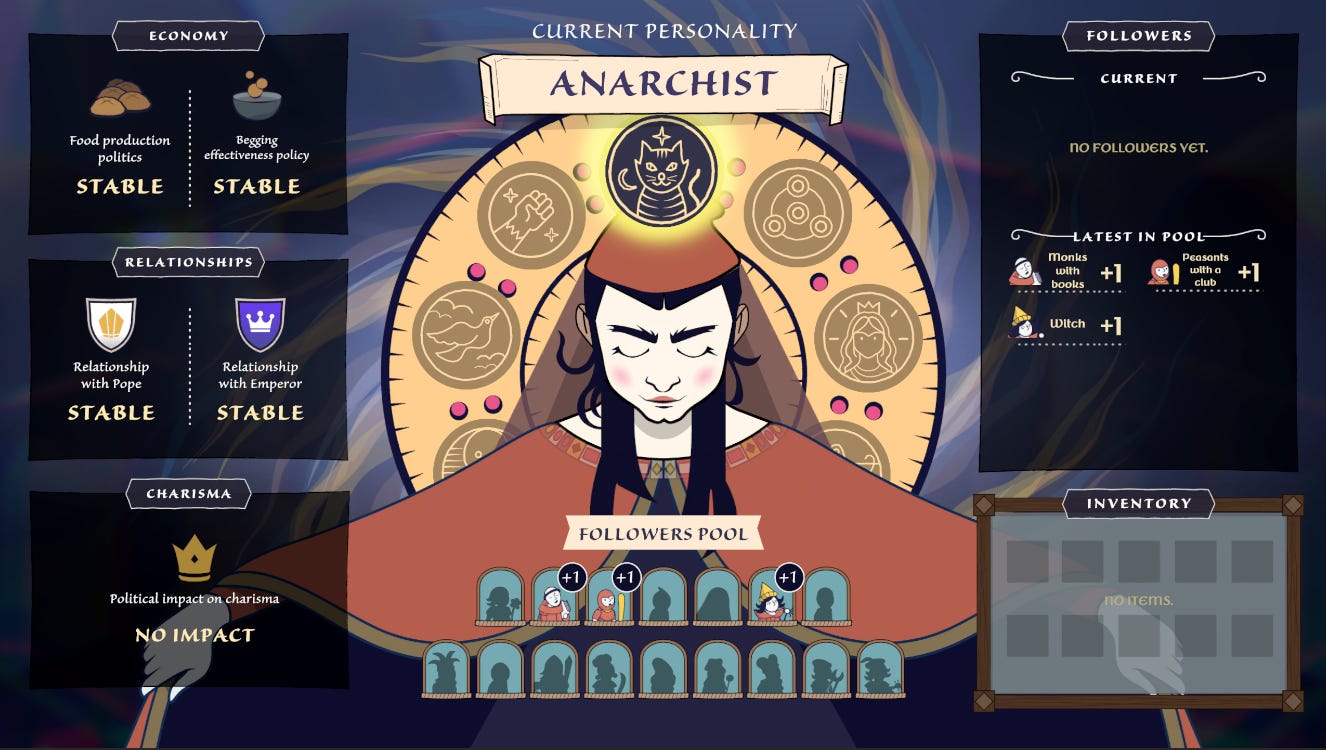
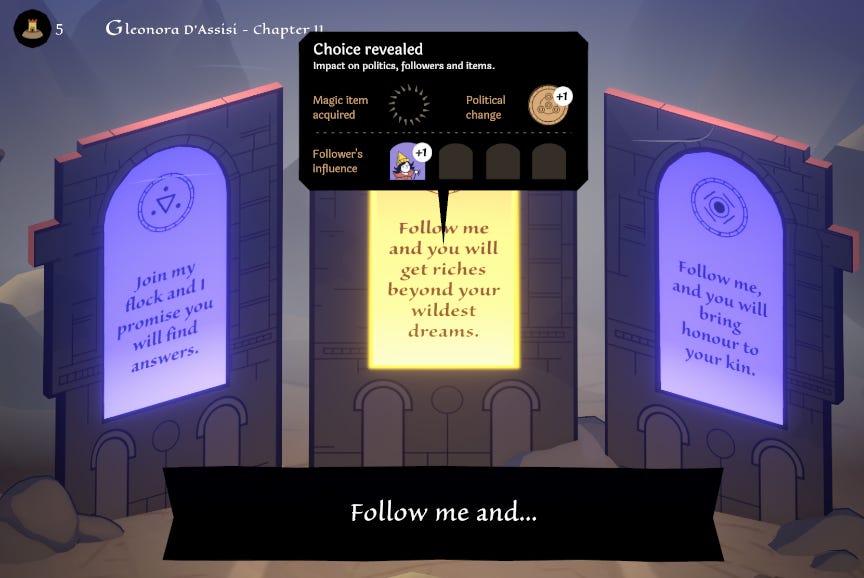
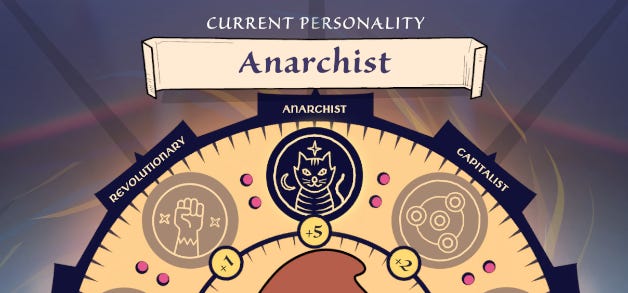
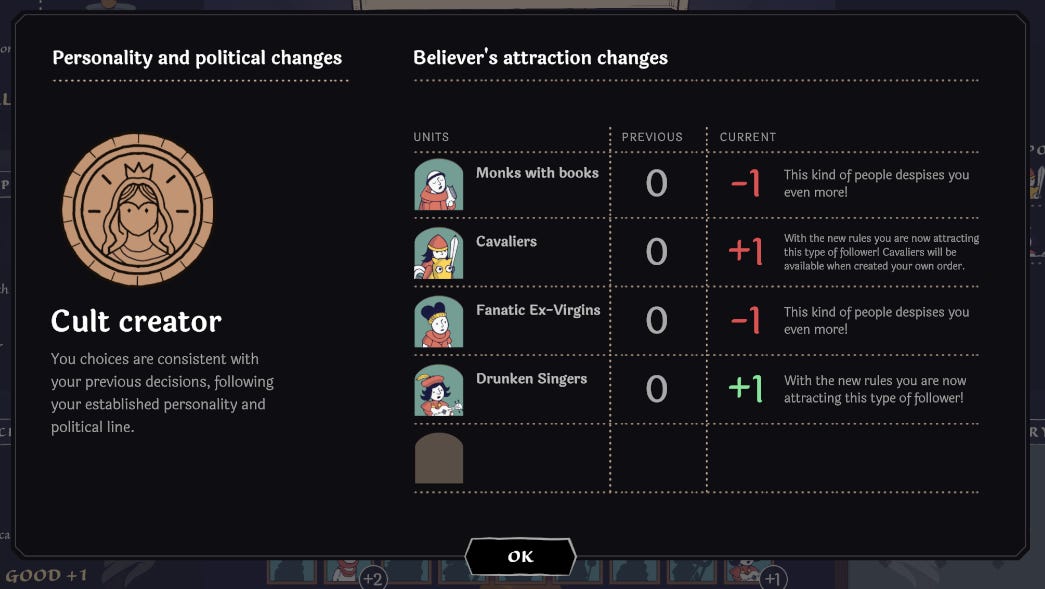

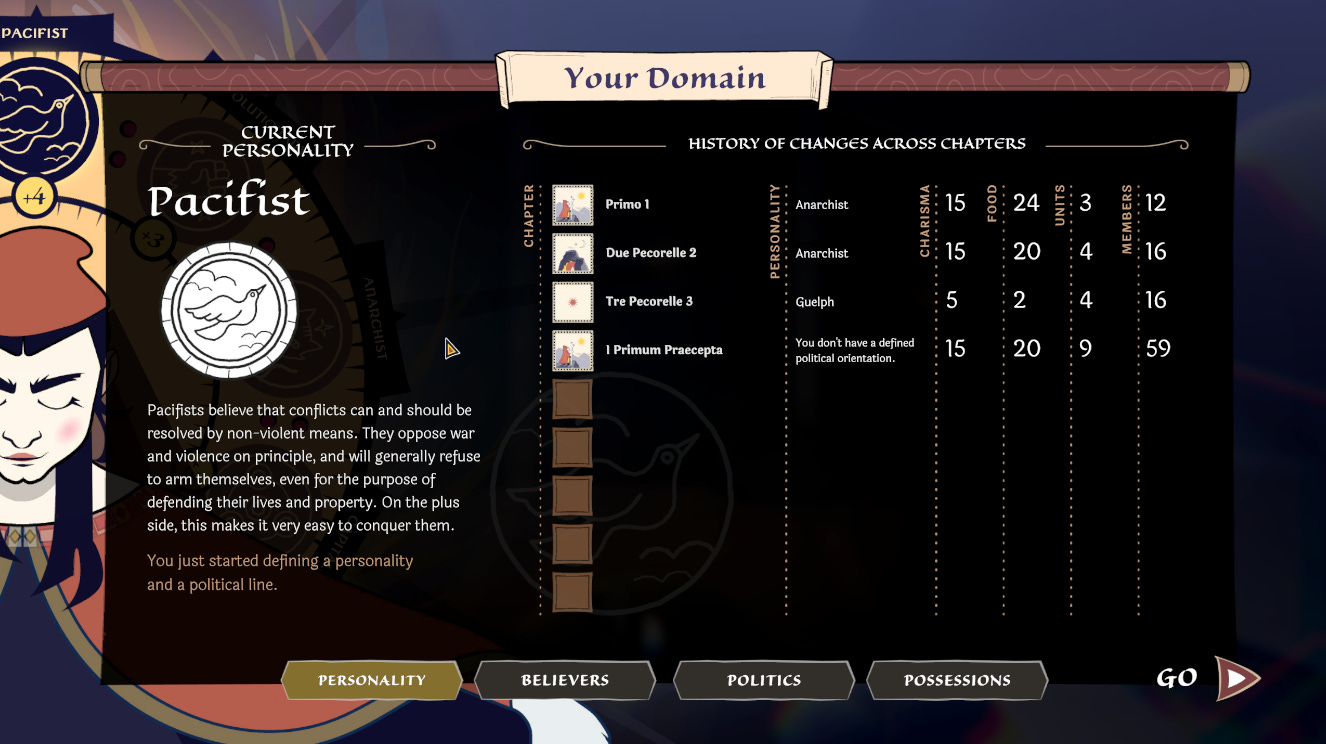
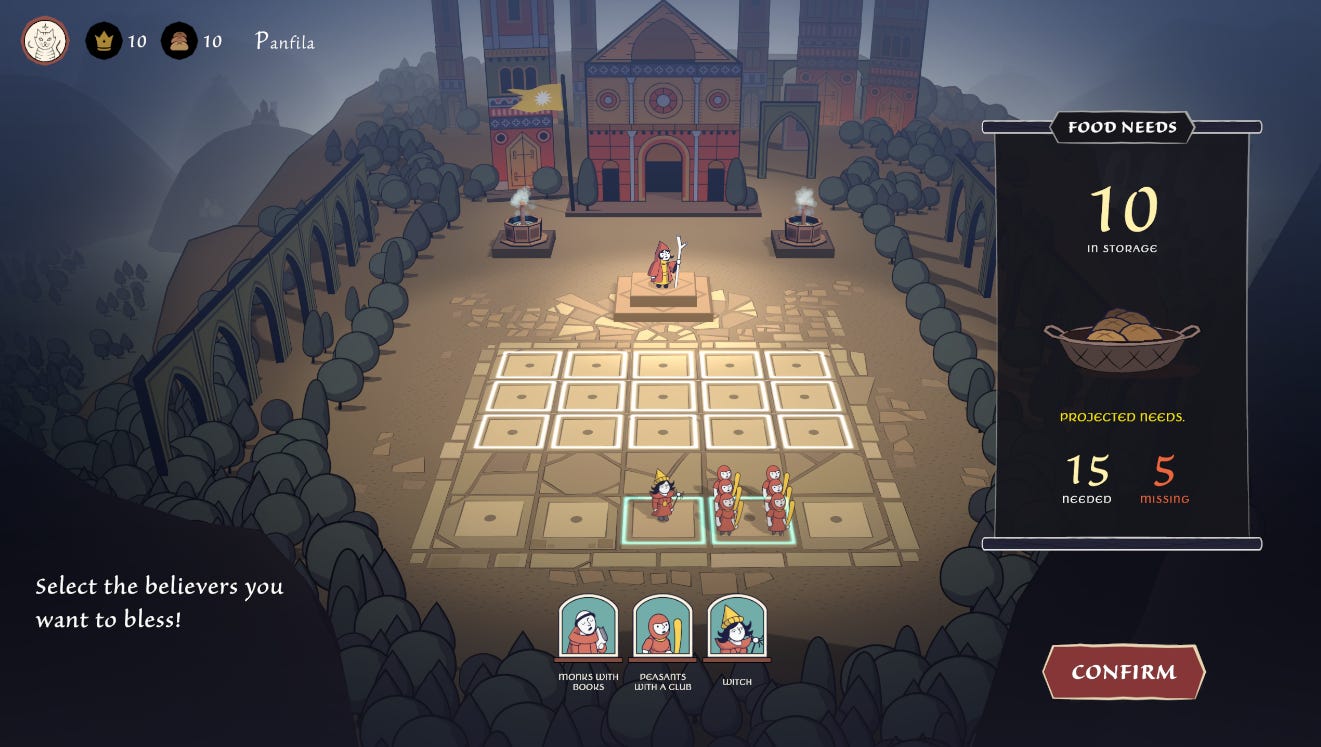

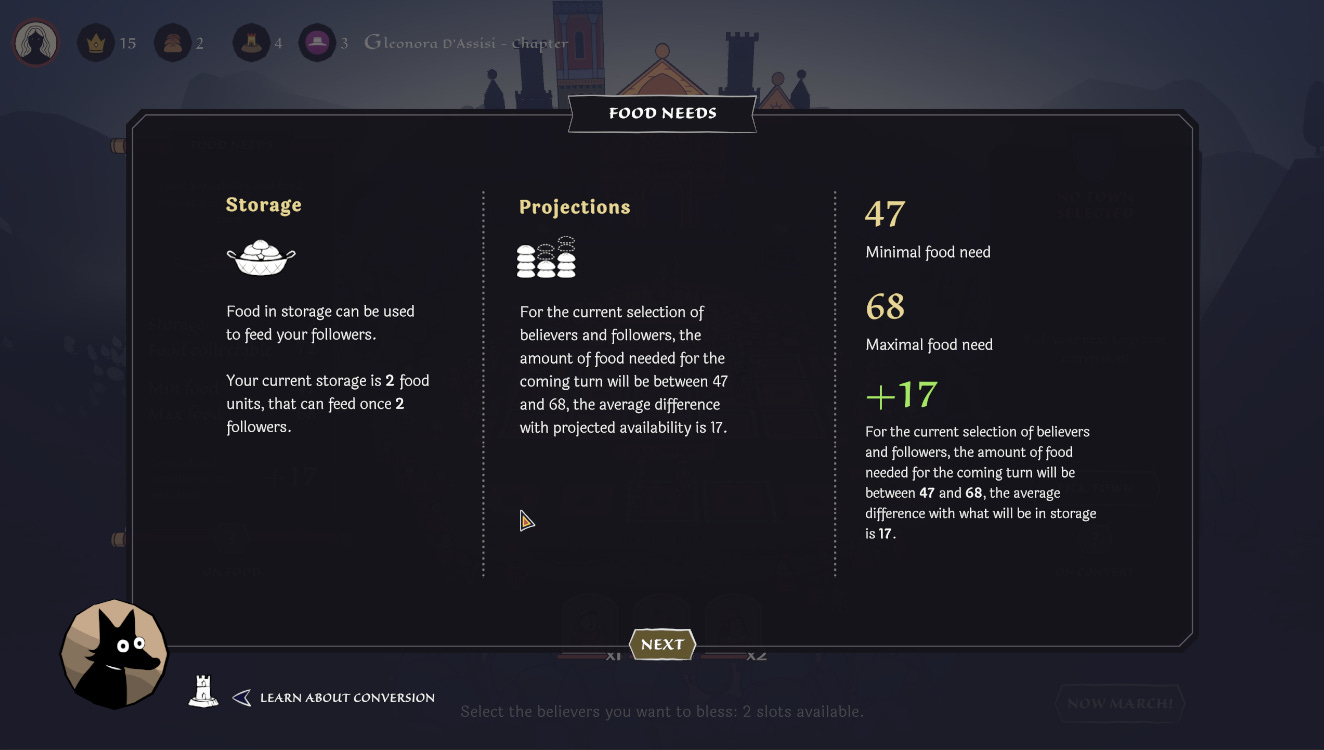
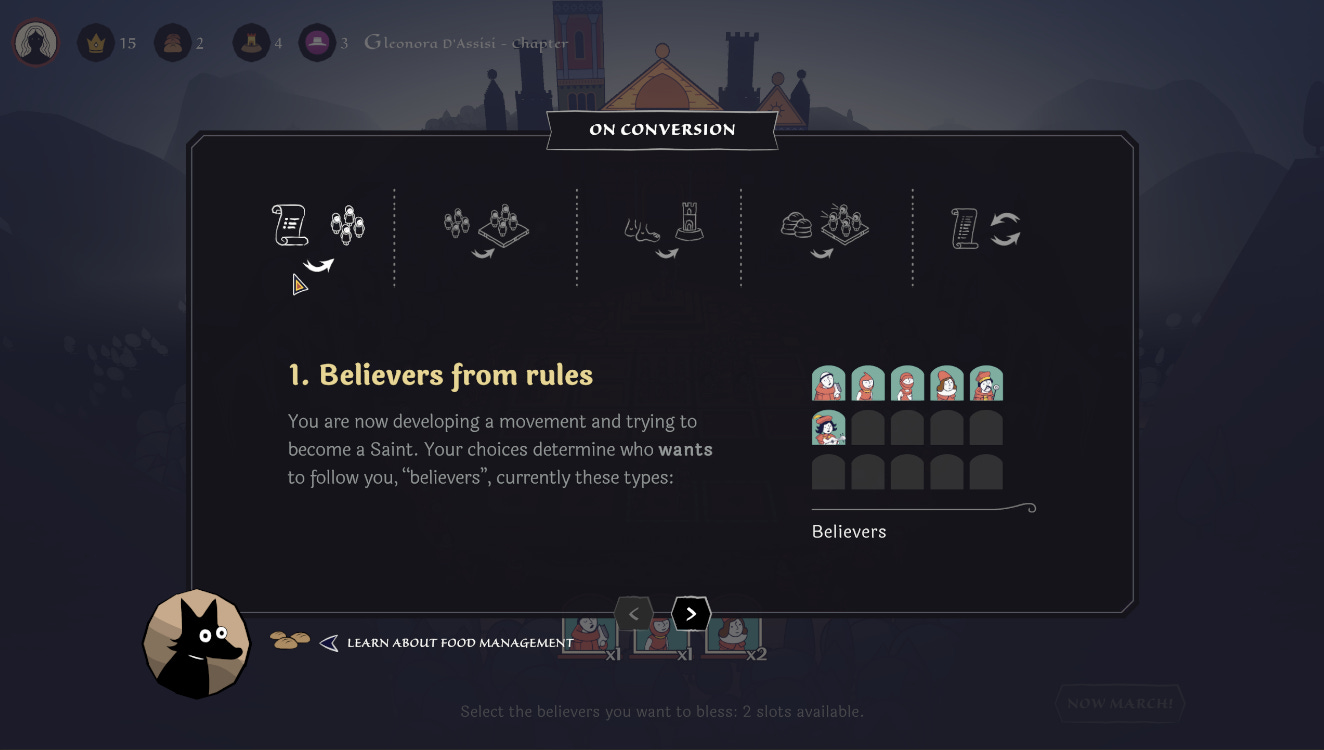
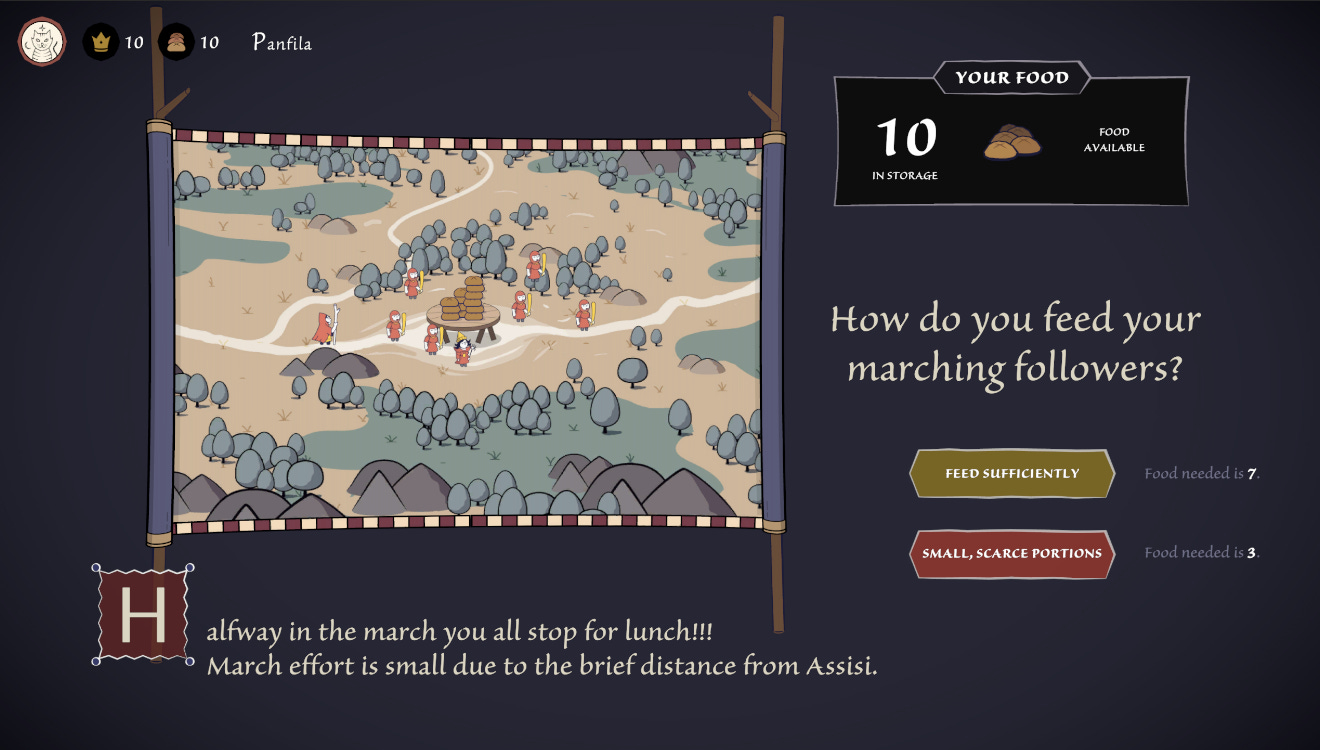
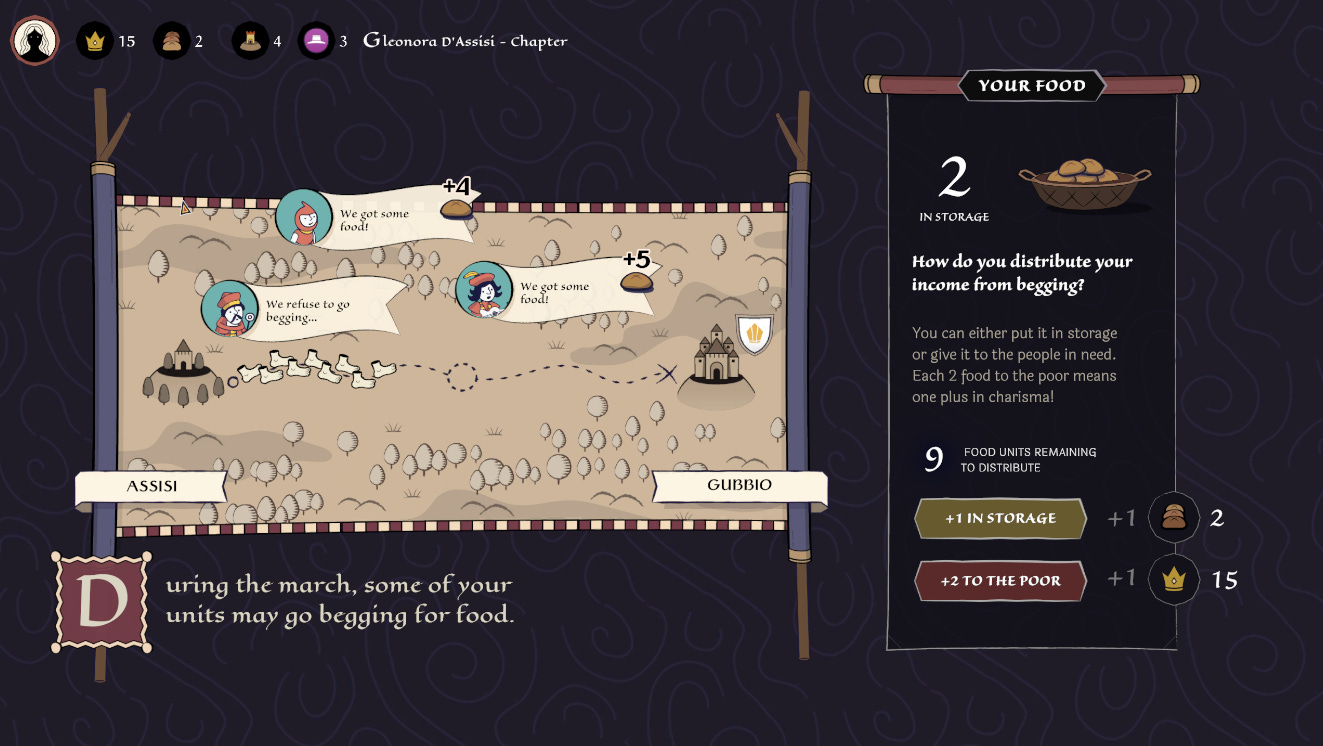
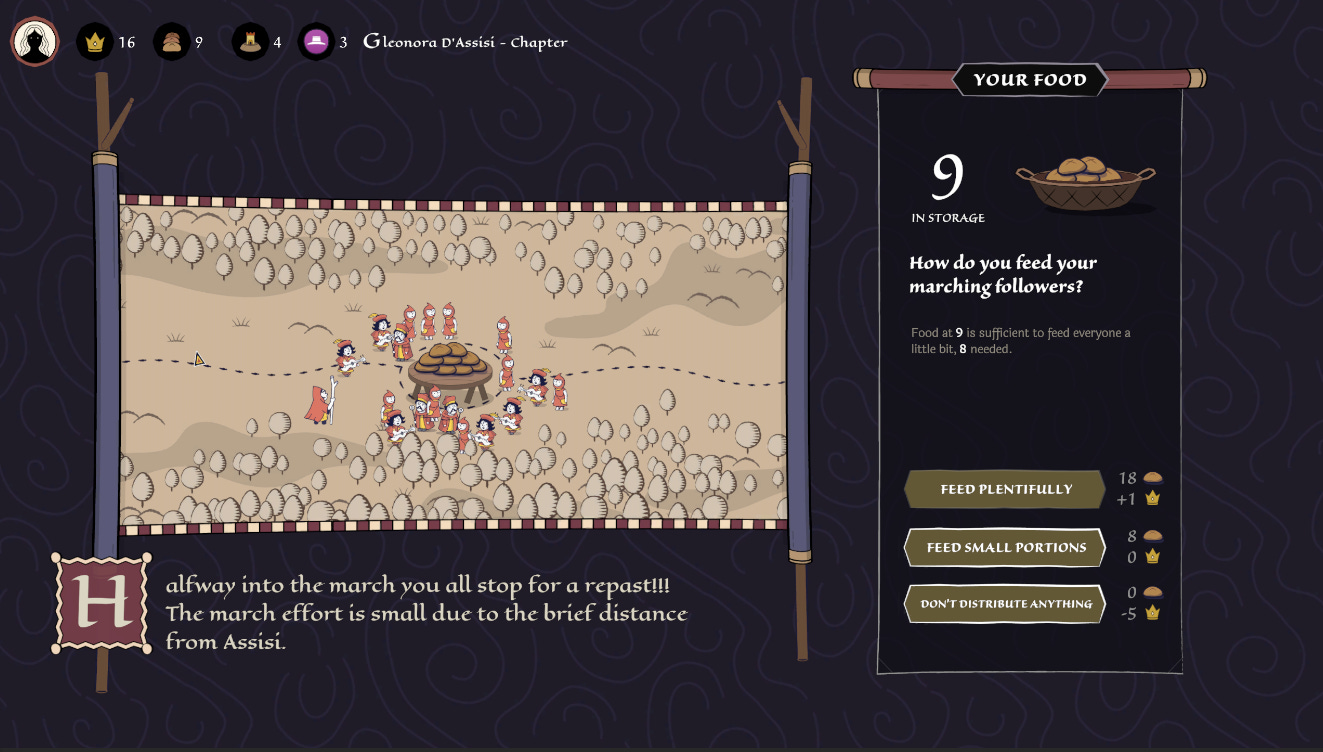




So I shown examples on how to integrate narrative in mechanics and UI, but also you can and should mechanize every UI as in: https://bsky.app/profile/cuddlepunk.bsky.social/post/3ln7vnfyap225 😊